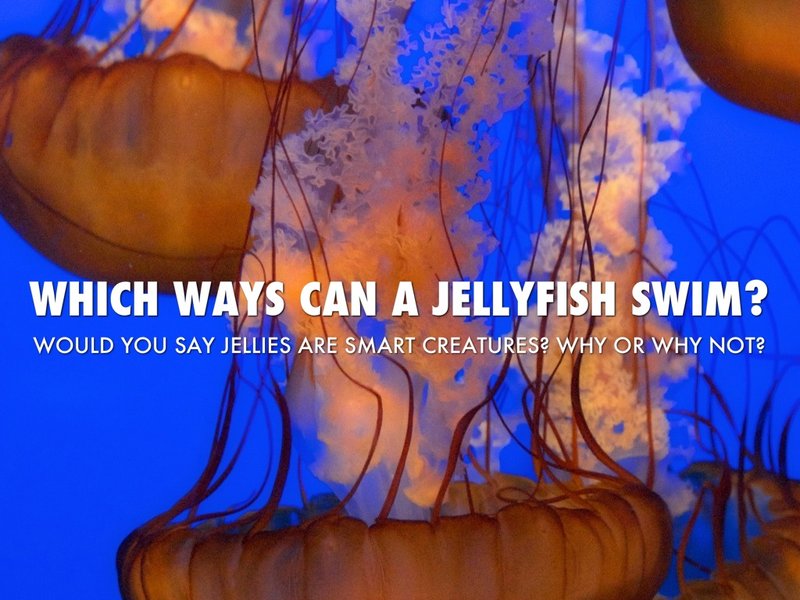
Jellyfish are more than just beautiful ocean dwellers; they’ve been around for millions of years and have some quirky traits that set them apart from other marine animals. Think of them as the mysterious artists of the sea, creating an intricate performance in the water while hiding some incredible secrets. If you’ve ever been curious about these gelatinous beings, let’s dive in and explore ten cool things you didn’t know about jellyfish.
1. Jellyfish Are Older Than Dinosaurs
Here’s a wild fact: jellyfish have been around for more than 500 million years! That’s way before dinosaurs roamed the Earth. Imagine the ancient oceans, with jellyfish drifting about while everything else was still evolving. They’ve survived through ice ages, massive extinctions, and changes in the Earth’s environment. Their adaptability is nothing short of remarkable.
This ancient lineage makes them one of the oldest living creatures on the planet. But how have they managed to last so long? Their simple body structure, which consists mostly of water (about 95%), allows them to thrive in various ocean environments. Unlike most animals, they don’t need a complex nervous system or brain to survive; they have a basic nerve net that helps them sense changes in their surroundings. It’s a classic example of “less is more.”
2. They Aren’t Actually Fish
You might call them jellyfish, but scientifically, they don’t belong to the fish family at all. Instead, they’re classified as cnidarians, a group that also includes corals and sea anemones. So, what does that mean? Well, cnidarians have a unique feature: specialized cells called cnidocytes which contain tiny, harpoon-like structures called nematocysts. These are what allow jellyfish to catch their prey and defend themselves.
When a jellyfish stings, it’s like a quick jab from a stinger that can inject toxins into their target. This ability is essential for their survival since they mostly eat small fish, plankton, and other tiny sea creatures. Just imagine a fierce little jellyfish taking down its dinner with a quick sting!
3. They Can Glow in the Dark
If you’ve ever seen a jellyfish light up underwater, you’ve witnessed bioluminescence in action. Many species of jellyfish can produce light in dark waters, creating a mesmerizing display. This glowing effect occurs due to special proteins and chemicals within their bodies.
The ability to shine isn’t just for show, though. Jellyfish use this glow as a defense mechanism, confusing predators or attracting plankton to eat. It’s also thought to help them communicate with each other in murky waters. So, next time you see a glowing jellyfish, remember it’s not just a pretty sight—it’s part of nature’s survival toolkit.
4. They Can Regenerate
Imagine if you could grow back a lost limb or heal from injuries instantly. While jellyfish may not be superheroes, they do possess stunning regenerative abilities. Certain species can revert back to their younger forms when damaged, effectively allowing them to reset their life cycle. This process is called transdifferentiation.
Instead of aging and dying like most creatures, species such as the *Turritopsis dohrnii*, often dubbed the “immortal jellyfish,” can go back to their polyp stage after reaching maturity. This ability could hold keys to understanding longevity and healing in other species, including humans. It feels like something out of a fairy tale, but for jellyfish, it’s all in a day’s work!
5. They Have Unique Reproductive Methods
Jellyfish have quite the romantic life—or should I say, a complicated one. Their reproductive cycle involves both sexual and asexual phases. Typically, jellyfish start life as tiny larvae, known as planulae, which eventually settle down and develop into polyps.
These polyps then reproduce asexually by budding off new jellyfish. When it’s time for the jellyfish life cycle to continue, they’ll release their sperm and eggs into the water, leading to external fertilization. The resulting larvae then drift away, starting the cycle anew. It might sound messy, but that’s just how jellyfish roll!
6. They Have a Simple Nervous System
You might think that a jellyfish must have a complex brain to navigate the ocean and catch prey. Surprisingly, they don’t have a brain at all! Instead, they have a decentralized nervous system. Their cells contain a nerve net that enables them to sense changes in their environment and respond accordingly.
This means jellyfish can react to stimuli without the need for complex decision-making. They can swim toward light or away from danger, all thanks to this system. Here’s the thing: their simplicity works for them. In a way, jellyfish are like the ultimate minimalists, mastering survival in their aqueous world without all the frills.
7. Some Are Venomous
Not all jellyfish are harmless. In fact, some of them are quite venomous and can pose serious threats to humans. The box jellyfish, for instance, has some of the most potent venom known to science. Stings from this jellyfish can cause extreme pain and even be fatal.
The tentacles of such jellyfish contain thousands of tiny stingers that can latch onto their prey or a curious swimmer. It’s fascinating to think about how these gelatinous creatures can be both captivating and dangerous. Always pay attention to safety flags and warnings at the beach; jellyfish can be lurking where you least expect them!
8. They Play a Key Role in the Ecosystem
Jellyfish may seem like mere drifters in the ocean, but they play a significant role in marine ecosystems. They serve as both prey and predator within the ocean food web. Small fish and sea turtles love to munch on jellyfish, while jellyfish themselves feed on tiny organisms like plankton and larval fish.
Their presence influences the populations of both their prey and predators. A sudden increase or decrease in jellyfish populations can have ripple effects on other marine life. Essentially, jellyfish are important players in maintaining the balance of marine ecosystems, showcasing how interconnected life in the ocean is.
9. They Can Travel Long Distances
Jellyfish are master travelers. With the help of ocean currents, they can cover vast distances. Some species of jellyfish have been found in locations far removed from their original habitats, thanks to these currents.
This ability to drift along with the tides gives them a unique advantage. They can find new feeding grounds and suitable environments for reproduction. They might not have a compass, but their journey through the ocean is a testament to nature’s design and the power of the currents.
10. Some Jellyfish Can Live for Years
While many jellyfish have a short lifespan, some species manage to live for years—if not indefinitely! As we discussed earlier with the immortal jellyfish, certain types can essentially reverse their aging process.
In contrast, other species might live for just a few months or a year, but their life cycles are so varied that it showcases a wide spectrum of jellyfish longevity. This diversity in lifespans speaks volumes about their adaptability in the ocean, allowing them to flourish in different environments and situations.
As you explore these stunning facts about jellyfish, it’s clear that these creatures are more than just beautiful sights in the ocean. Their unique characteristics, behaviors, and roles in the ecosystem highlight how amazing life can be in our oceans. Next time you see a jellyfish, remember the secrets it carries and the wonder it brings to our world.

